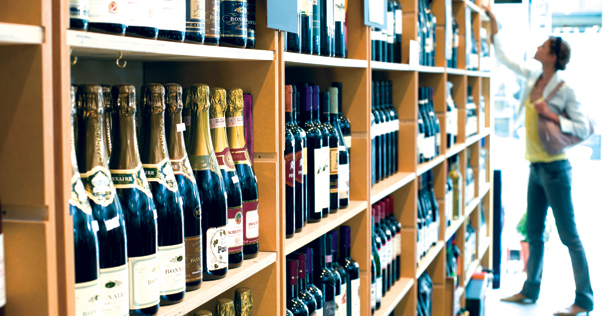Fortunately, the plight of female oenophiles has improved since the second century A.D., when Roman women faced severe punishment for consuming alcohol. Yet gender associations remain embedded in the world of wine. It’s easy to notice once we start looking for it: Richer, heavier wines are “masculine,” while delicate ones are said to be “feminine.” Formal wine service is ingrained with a gendered code of conduct (all too often, men still get handed the wine list; ladies get their glasses poured first). And the dominant image of a wine collector is still unflinchingly male.
Specific aspects of gender in wine are naturally evolving. Women continue to enter all corners of the industry. And presumptions of wine preference are flexing; to wit, the term “brosé” being used to capture rosé’s current surge of popularity with men—a situation practically unthinkable a decade ago.
The most visible area in which gender rears its head over and again in the wine world is on retail shelves, where there seems to be a disproportionate amount of marketing mojo being steered toward women-oriented branding and promotion.
- A proliferation of female-targeting labels like Skinnygirl, Seven Daughters, Middle Sister and Mommy’s Time Out, just to name a few.
- Price tags below $US10 that present a lifestyle-centric angle seem to stand a better chance with the specific type of shopper these labels are courting, who mostly just wants to unwind.
- “Today’s modern woman wears many different hats daily. Marketers should take the time to identify sub-segments rather than lumping all women into one homogenous group,”
- An apparent success of brands built around the controversial “B” word – Bitch, Jealous Bitch, Royal Bitch, Sweet Bitch
- The sub-demographic of millennial-aged women would be considered a holy grail. Millennials currently drink over 50% of the wine purchased in the U.S., Wine Market Council reports, and the majority of these purchases are being made by women. In 2015, females accounted for 66% of “high frequency” (once or more a week) wine drinkers under the age of 30.
In the end, there are as many different types of female wine drinkers as there are wine drinkers. But as women’s excitement about wine—to say nothing of their spending power—continues to grow, one thing is certain: the future of wine sales will likely continue to command the attention of wine marketers and sellers.
Read the complete article written by Zachary Sussman here.
Hopefully, the women wine drinkers who read this blog will have some interesting comments.

